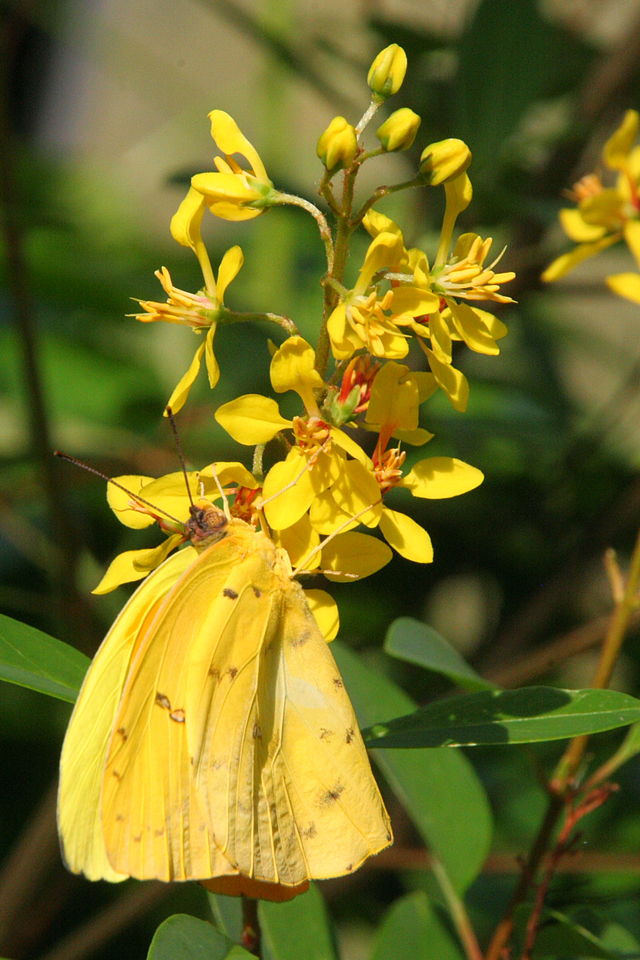Chris Barnhart sent me this update on the Dr. Bill Roston Native Butterfly House at the Botanical Center Gardens in Close Memorial Park.
The milder weather and the rain last week really perked up everything in the park. We’ve got great variety in the Butterfly House (BH) right now. All of the swallowtail species are in there now, and all life stages of each. Monarch chrysalides have nearly all hatched, but more larvae are maturing. There are several Polyphemus and Io moths in the cage. Also have lots of hatchling Io cats, so we haven’t seen the last of those. However, the days are getting shorter, and these should be the last broods of the year for most of our resident butterflies and moths. The chrysalides and cocoons of the current caterpillars will diapause (enter in to a period of suspended development) and not hatch till spring.
 |
| Cloudless sulphur caterpillar- Wikimedia |
 |
| Cloudless- Wikimedia |
The cloudless sulphur is a southern species that moves north each summer, and then migrates or dies out in the fall. They tend to start moving south now, and you may notice that they will go to the SE corner of the BH in the afternoon, while the monarchs will go to the SW corner, as we move into fall. (A fascinating observation- Ed.)
 |
| Questionmark butterfly (Polygonia interrogationis) - CB |
